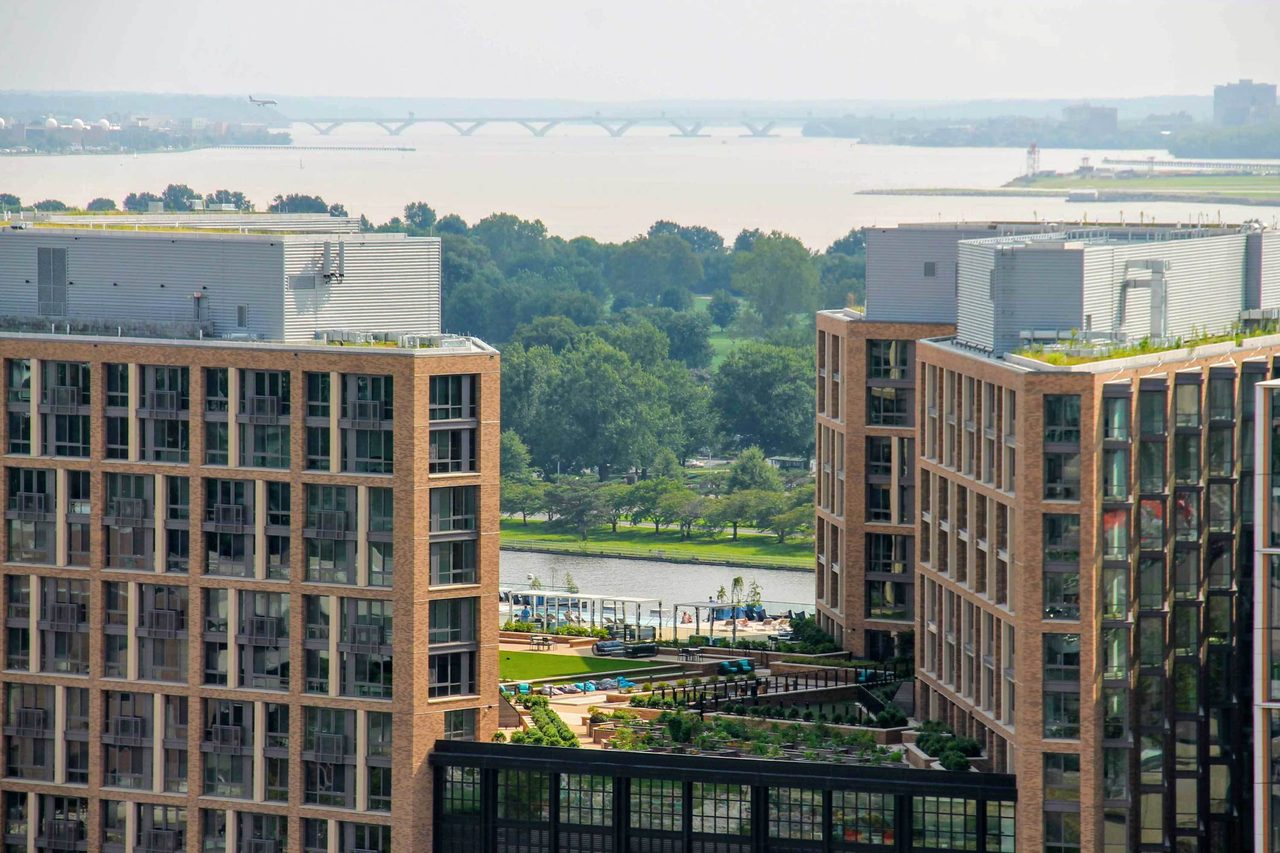Q&A
5 Questions with an Architect
The roofing industry appears ready to move forward after months of uncertainty. Will the optimism – and supplies – last?
Compiled by Owens Corning
SCROLL
DOWN

Tiffany Coppock
Commercial Building Specialist, Owens Corning
When it comes to the commercial enclosure, the roof offers prime real estate for contractors and building owners seeking to reduce a building’s carbon footprint and improve the occupant experience. A combination of factors including more stringent environmental regulations, incentives such a LEED, and public interest in reducing the environmental footprint of buildings is contributing to more environmentally sustainable roofs across America.
During the International Roofing Expo in February in New Orleans, Roofing Contractor caught up with Tiffany Coppock, commercial building specialist at Owens Corning. Coppock shared her experience as an architect and a team member involved on several high-performing roofs as she discussed how commercial roof designs are evolving. A continuing trend is the development of vegetative roof assemblies (VRAs). Below are excerpts from a conversation about how roofs are evolving in 2022.
RC: How does a commercial building’s roof affect its environmental footprint?
TC: It is important to consider how materials can function within a roof design to benefit the environment. The impact of manufacturing a material, the resources consumed in transporting materials to the jobsite, and the opportunity to reduce landfill waste all influence a building’s footprint. From a functionality perspective, VRAs provide a good example of how roofs can help support environmental stewardship. For example, vegetation and building materials such as insulation in a VRA design can work together to retain, store, and responsibly release stormwater. Water captured at roof-level can be repurposed for use in watering landscape or flushing sanitation systems. Roofs can also be designed to help reduce the urban heat island effect, which can potentially influence weather patterns, the aging of materials and occupants’ overall enjoyment of a building.
In urban settings, VRAs can provide new space for plants and natural habitat. The U.S. Coast Guard headquarters near Washington, D.C. is a good example. Built into a hilly terrain, the massive roof provides space for native birds and plants. The Wharf D.C. is another good example – it’s a neighborhood of VRAs spanning nearly a mile of the Potomac River. This network of VRAs allow building occupants to take in a breath of fresh air above street level and provide a new perspective on some of our nation’s landmarks. Through both materials installed and functionality, contractors can achieve roofs that have a big influence on not just the appearance of our buildings, but on the quality of our environment.
RC: What factors are influencing commercial roofs today – is change being driven from within the contracting community, by manufacturers or through legislation?
TC: All three of these factors are influencing roofs. In January 2021, all of Canada and several U.S. states adopted new environmental regulations to address concerns about the high global warming potential (GWP) of hydrofluorocarbon blowing agents. Over the past year, more states have adopted the regulations and others are preparing to adopt tighter environmental regulations. While the regulations were new, the goal of reducing the global warming potential in blowing agents used in XPS insulation was a priority at Owens Corning for several years. On Jan. 1, 2021, we introduced FOAMULAR® NGX™ as an insulation that delivers a 90% reduction in blowing agent GWP compared to legacy FOAMULAR insulation and is optimized to demonstrate a greater than 80% reduction in embodied carbon. Completely eliminating HFC 134a, this new material maintains its high R-value per inch, a wide range of compressive strengths, superior moisture resistance and durability. That’s essential because no contractor wants to sacrifice the performance of a roof.

Recommending a product with an environmental product declaration or a material that can be repaired instead of replaced speak to a contractor’s environmental knowledge.
RC: What types of commercial buildings are integrating sustainability into their roofs?
TC: Owner-occupied buildings have long been particularly interested in sustainability. In the healthcare environment, evidence-based design has shown us the virtues of integrating natural elements, like daylight, into building design. Schools in urban environments can use the roof to create a “safe space” for access to nature. And government buildings have long been interested in the robustness and longevity of roofs that can stand the test of time.
When we think about longevity, it’s important to consider how materials can be reused as opposed to ending up in a landfill. As most commercial roofs are designed to last for decades, maintenance and resiliency are important considerations. As IRE 2022 was held in New Orleans, we are reminded of the catastrophic damage posed by Hurricane Katrina in 2005. It’s important to select materials that support resiliency and allow a roof to be repaired versus replaced. This is where the expertise of contractors can really come into play as they are the ones installing the materials and making repairs. The contractor can really be the hero in assuring the long-term performance of the roof.
RC: How can sustainability be a point of differentiation for contractors’ businesses?
TC: During the bid process, customers may request sustainable materials, so being a contractor who can walk the talk and point to choices they’ve made in their own business can demonstrate their commitment to the environment. Knowledge about various declarations and certifications can also help. Recommending a product with an environmental product declaration or a material that can be repaired instead of replaced or suggesting an insulation with a lower GWP in its blowing agent all speak to a contractor’s environmental knowledge. Differentiation isn’t just a matter of adding in a greater number of sustainable products. Offering owners and occupants tools and education can help them reap the benefits of more sustainable roofs. For example, a contractor can help a building owner see how access to the roof might allow the building to grow plants or even local food.
Contractors can also choose suppliers who not only make sustainable materials but integrate sustainability into their culture. At Owens Corning, we were implementing sustainability into our business long before it was fashionable. In 2021, we earned a place on the Dow Jones Sustainability World Index (DJSI World) for the 12th consecutive year. Sustainability goes beyond the planet and involves our people. From adding a solar canopy to our parking area to supporting use of stairs versus elevators, sustainability is integrated into the Owens Corning headquarters design.

The Owens Corning team at its booth during the 2022 International Roofing Expo.
RC: How will the sustainability conversation continue to evolve in 2022?
TC: In the last decade, we’ve proven that we can and must do a lot of things to improve the energy efficiency and the environmental sustainability of our buildings. Continuous insulation is a good example. Whereas it was once only an optional material, today, continuous insulation is a code requirement in most U.S. buildings. Now we’re going further to look at other areas of the enclosure to fine tune performance – like tiny thermal bridges in parts of the enclosure that have a significant impact in key areas. We just introduced Owens Corning® FOAMGLAS® Perinsul™ SIB at World of Concrete to mitigate thermal bridging below masonry veneer. Although these micro-steps are small, they can play a big part in optimizing a building’s performance.
Art Aisner is editor of Roofing Contractor. Reach him at 248-244-6497 or aisnera@bnpmedia.com.
